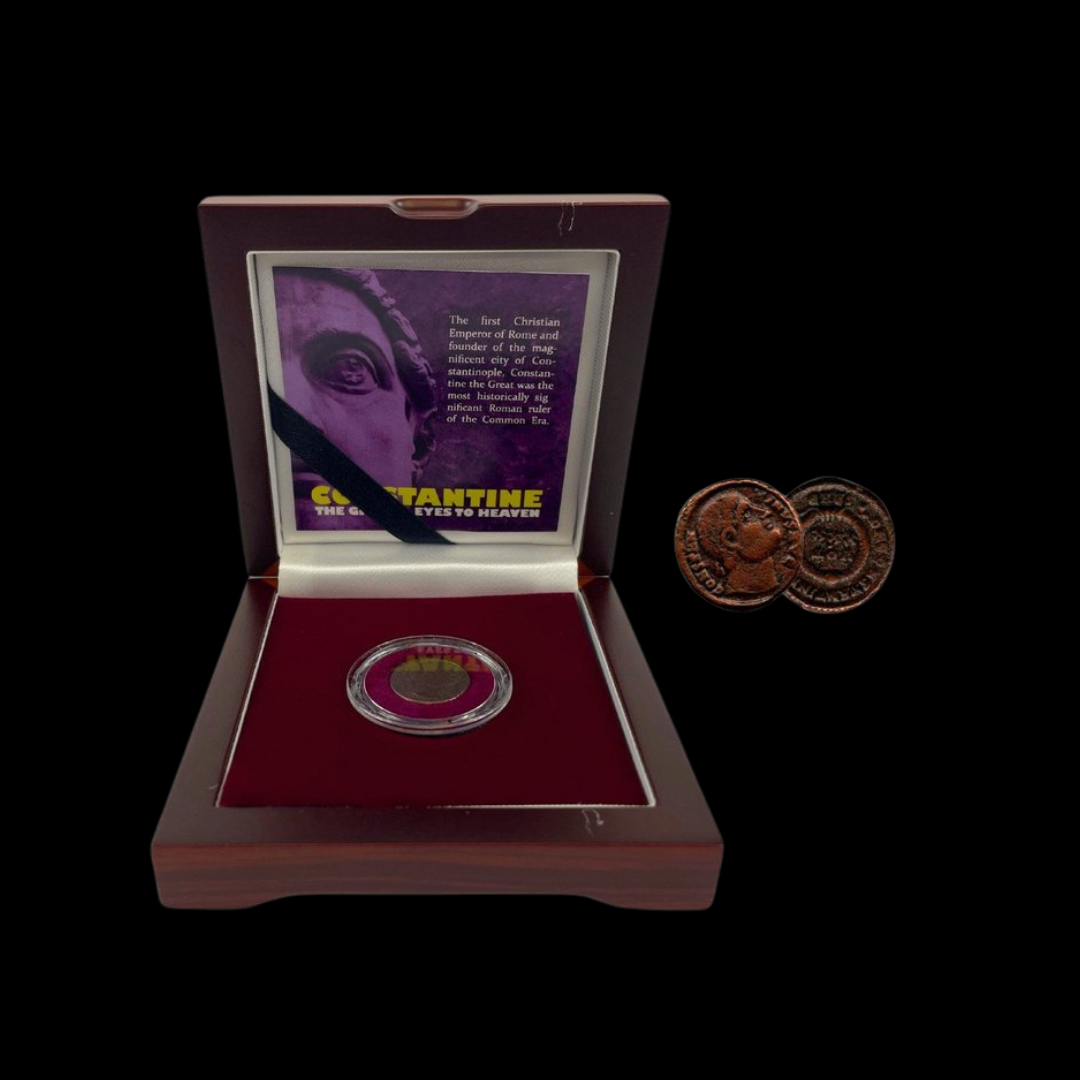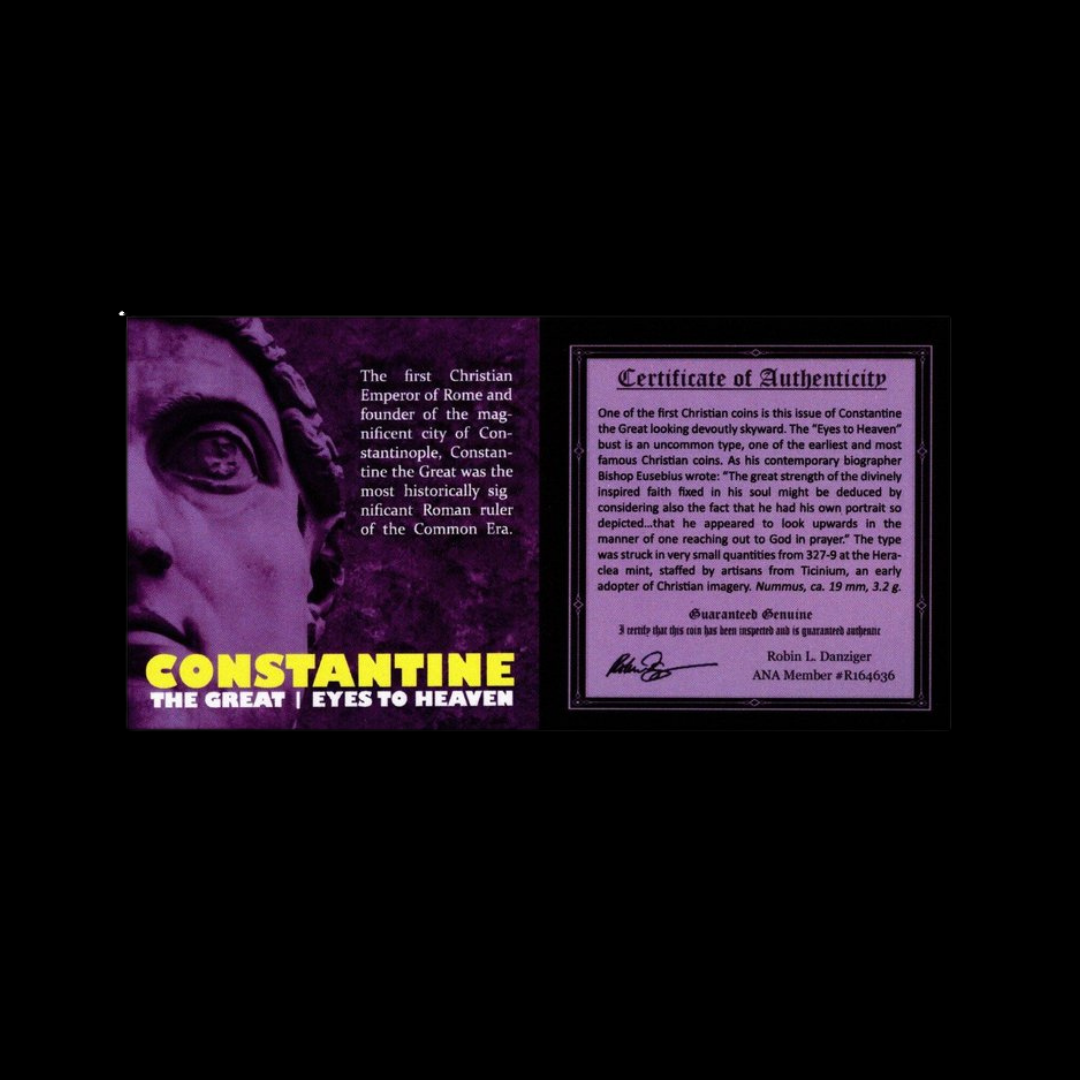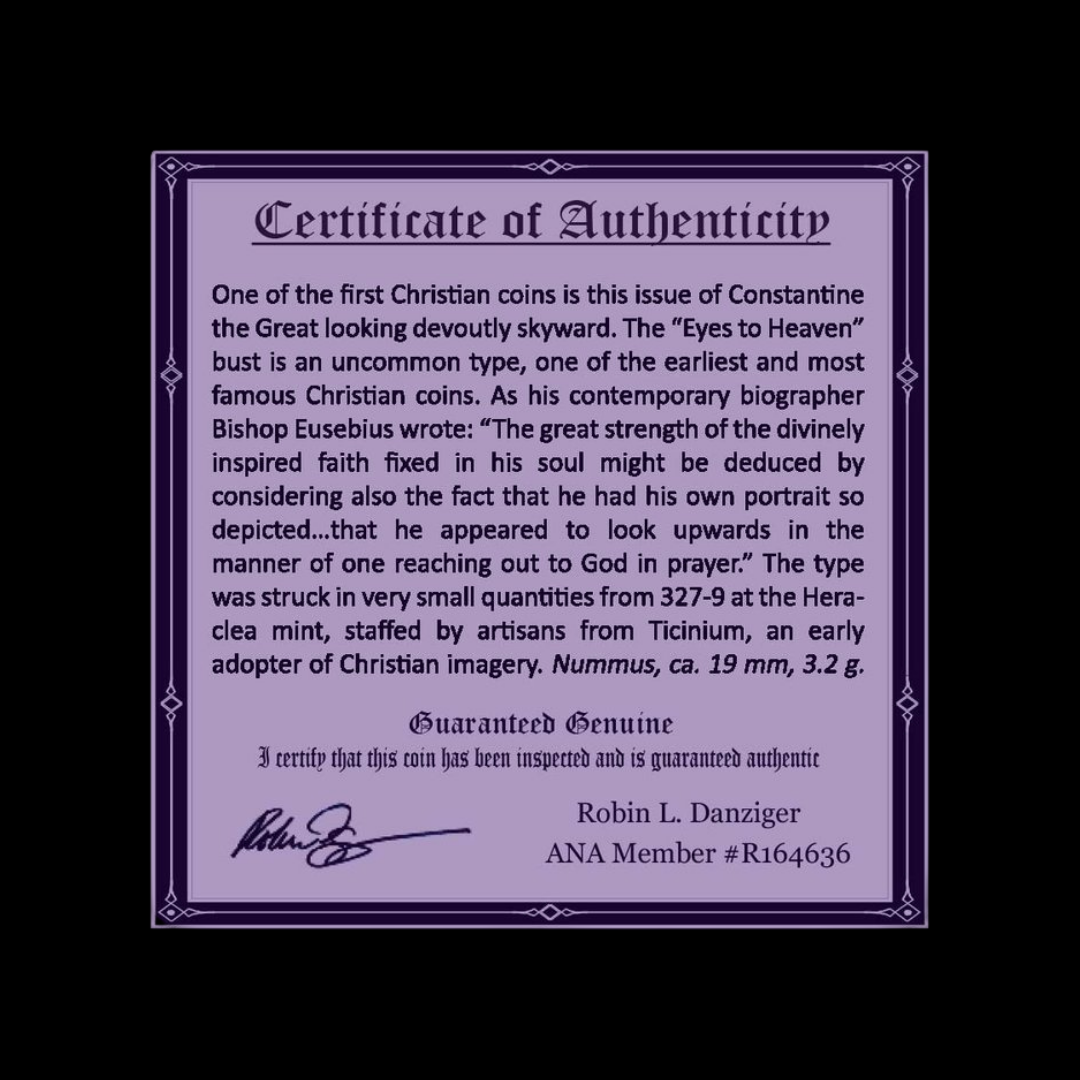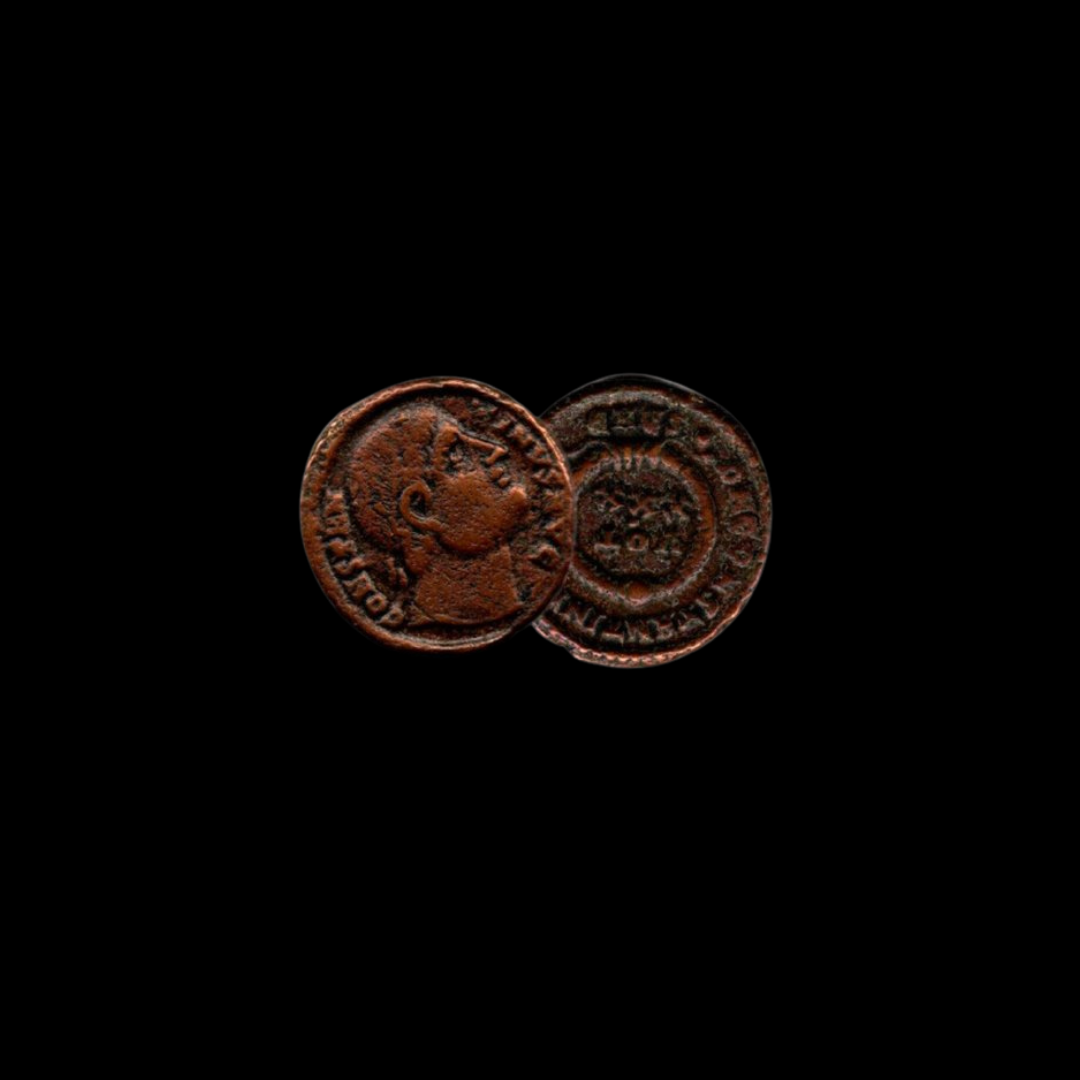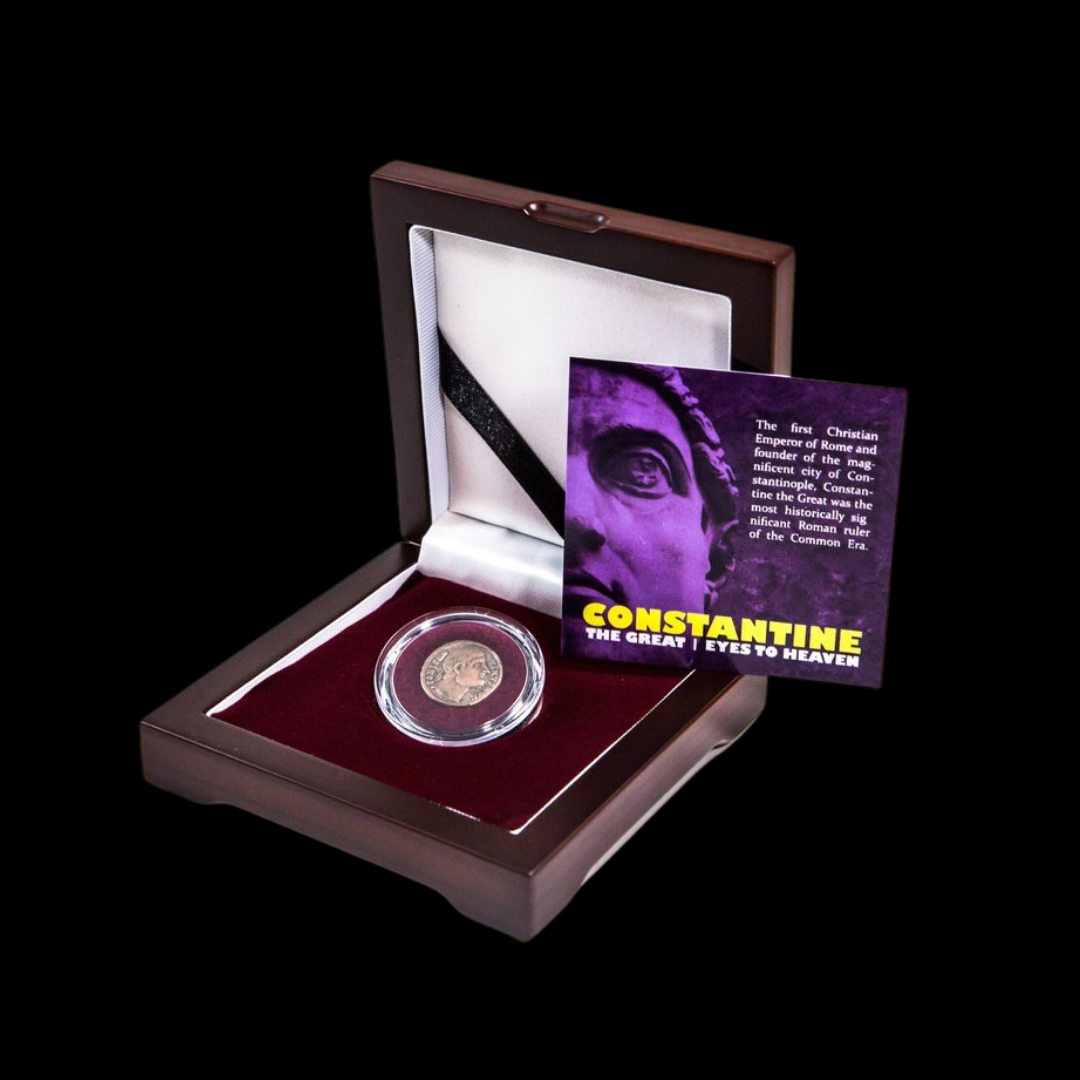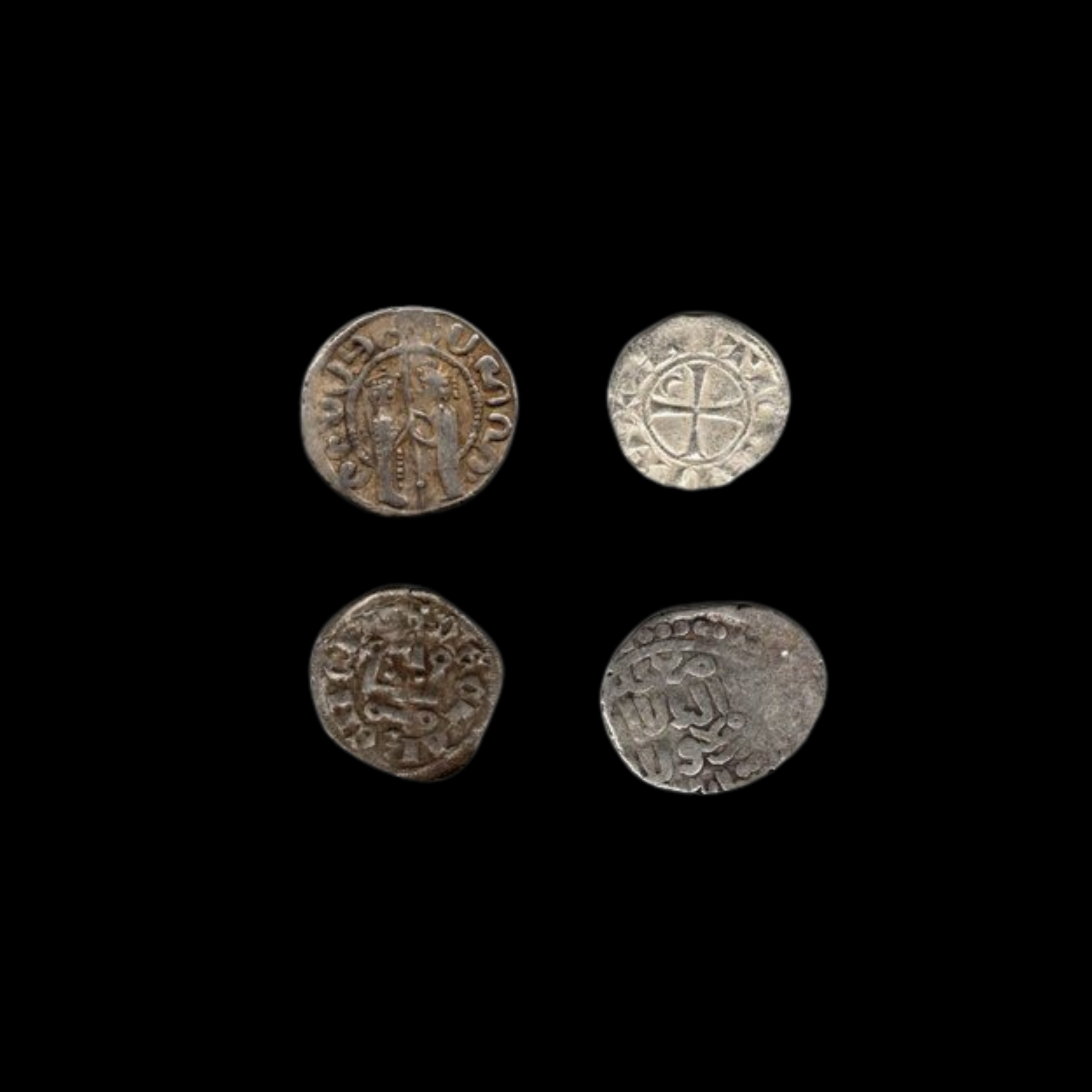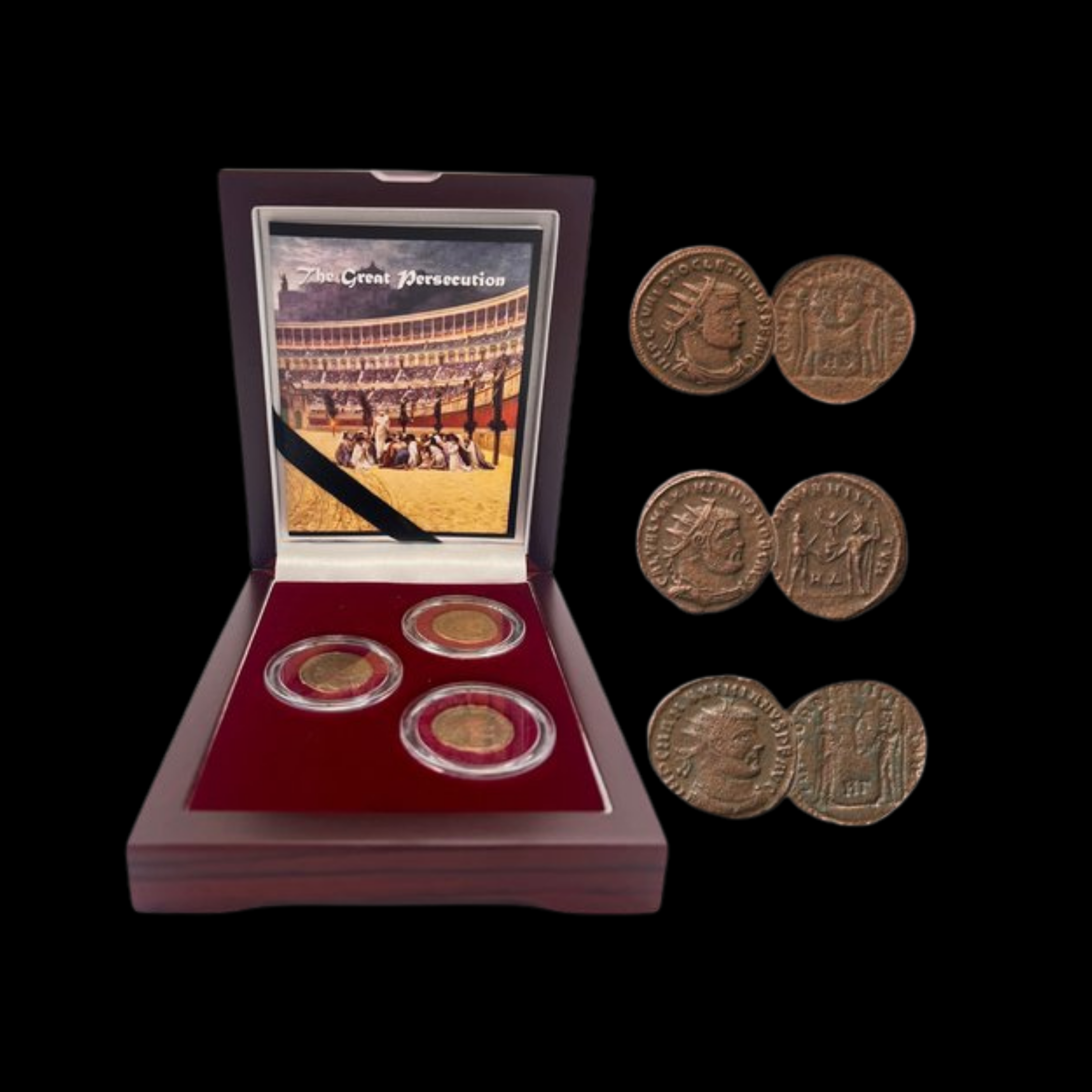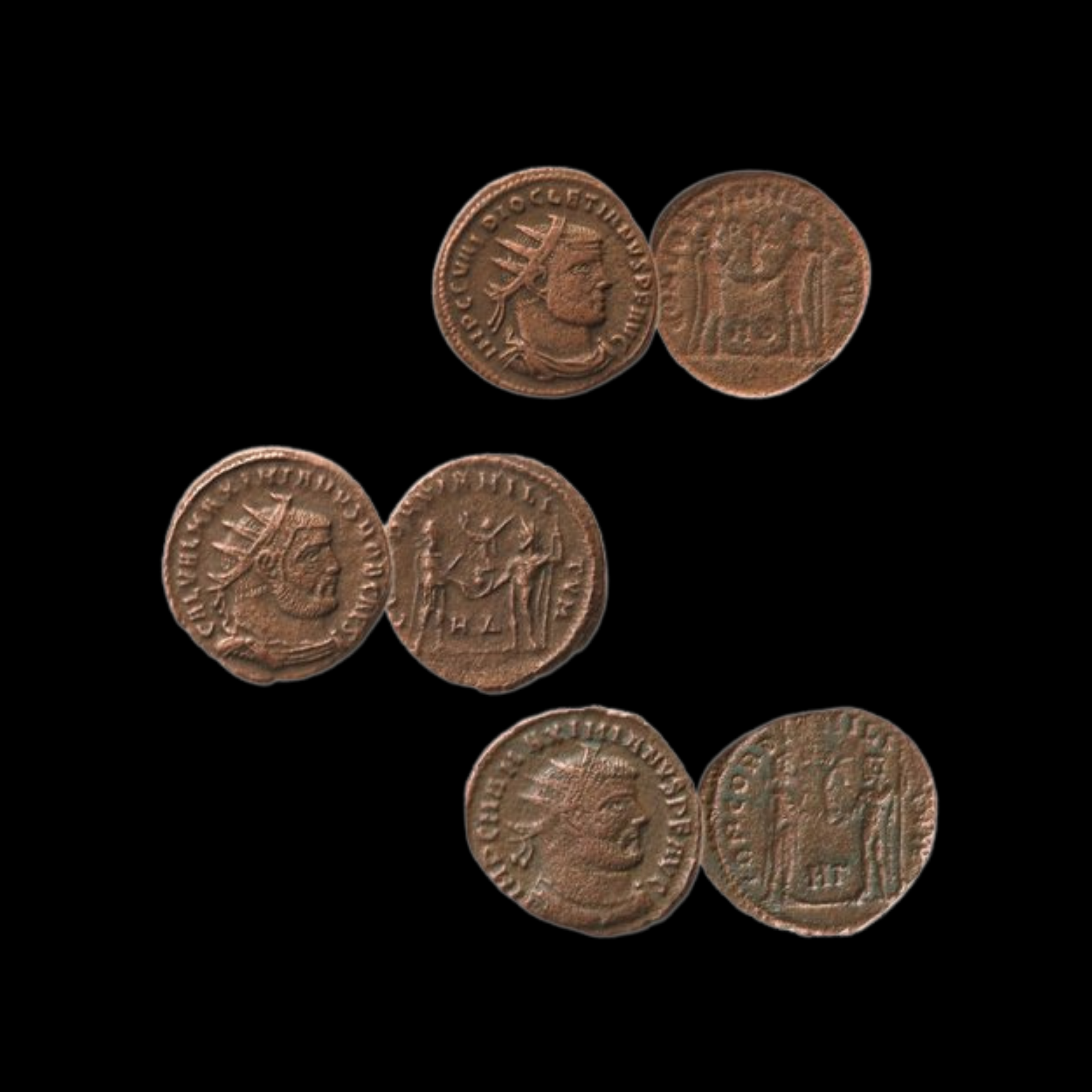 Image 1 of 4
Image 1 of 4

 Image 2 of 4
Image 2 of 4

 Image 3 of 4
Image 3 of 4

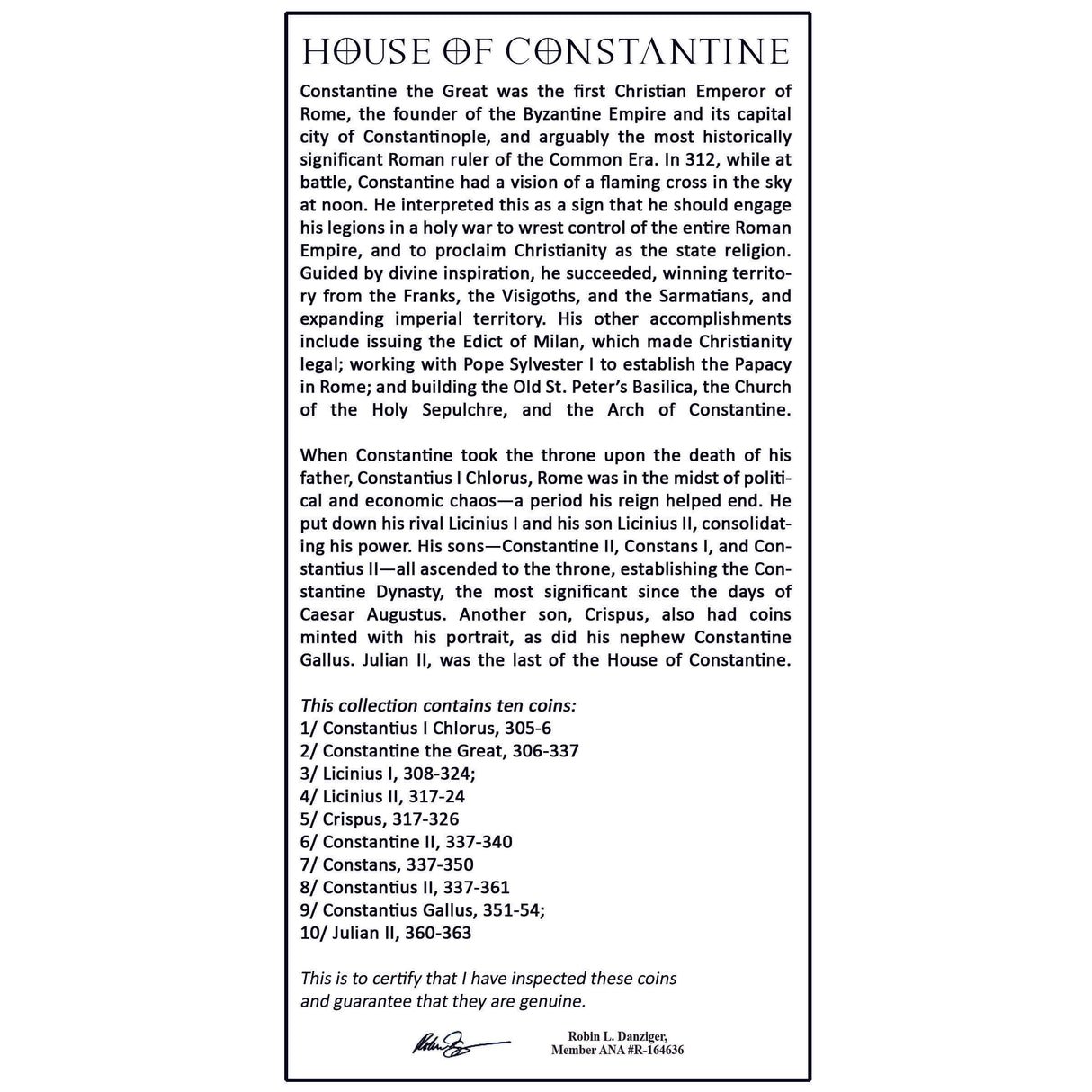 Image 4 of 4
Image 4 of 4





House of Constantine: Collection of 10 Roman Bronze Coins (about 1700 years ago)
This collection features ten bronze coins from the Constantinian dynasty, including issues of Constantine the Great and his family members who ruled the Roman Empire during the 4th century AD.
Technical Details:
Format: Ten-coin boxed set
Box ID: HOC10CNBOX
Material: Bronze
Historical Significance: Constantine the Great transformed the Roman world as the first Christian Emperor, founder of the Byzantine Empire, and creator of Constantinople (modern Istanbul). His rise to power began with a pivotal vision of a flaming cross in the sky in 312 AD, which inspired him to engage his legions in a campaign to unify the Roman Empire under Christian rule. His successful military campaigns expanded imperial territory from the Franks, Visigoths, and Sarmatians.
Constantine's legacy includes the Edict of Milan, which legalized Christianity; establishing the Papacy in Rome with Pope Sylvester I; and constructing landmarks like the Old St. Peter's Basilica, the Church of the Holy Sepulchre, and the Arch of Constantine. His reign helped end a period of political and economic chaos after defeating rivals like Licinius I and his son.
The Constantinian dynasty continued through his sons Constantine II, Constans I, and Constantius II, who all became emperors. His other son Crispus and nephew Constantine Gallus also appeared on coinage. Julian II was the last ruler from the House of Constantine, which became the most significant imperial family since the time of Caesar Augustus.
This collection features ten bronze coins from the Constantinian dynasty, including issues of Constantine the Great and his family members who ruled the Roman Empire during the 4th century AD.
Technical Details:
Format: Ten-coin boxed set
Box ID: HOC10CNBOX
Material: Bronze
Historical Significance: Constantine the Great transformed the Roman world as the first Christian Emperor, founder of the Byzantine Empire, and creator of Constantinople (modern Istanbul). His rise to power began with a pivotal vision of a flaming cross in the sky in 312 AD, which inspired him to engage his legions in a campaign to unify the Roman Empire under Christian rule. His successful military campaigns expanded imperial territory from the Franks, Visigoths, and Sarmatians.
Constantine's legacy includes the Edict of Milan, which legalized Christianity; establishing the Papacy in Rome with Pope Sylvester I; and constructing landmarks like the Old St. Peter's Basilica, the Church of the Holy Sepulchre, and the Arch of Constantine. His reign helped end a period of political and economic chaos after defeating rivals like Licinius I and his son.
The Constantinian dynasty continued through his sons Constantine II, Constans I, and Constantius II, who all became emperors. His other son Crispus and nephew Constantine Gallus also appeared on coinage. Julian II was the last ruler from the House of Constantine, which became the most significant imperial family since the time of Caesar Augustus.
This collection features ten bronze coins from the Constantinian dynasty, including issues of Constantine the Great and his family members who ruled the Roman Empire during the 4th century AD.
Technical Details:
Format: Ten-coin boxed set
Box ID: HOC10CNBOX
Material: Bronze
Historical Significance: Constantine the Great transformed the Roman world as the first Christian Emperor, founder of the Byzantine Empire, and creator of Constantinople (modern Istanbul). His rise to power began with a pivotal vision of a flaming cross in the sky in 312 AD, which inspired him to engage his legions in a campaign to unify the Roman Empire under Christian rule. His successful military campaigns expanded imperial territory from the Franks, Visigoths, and Sarmatians.
Constantine's legacy includes the Edict of Milan, which legalized Christianity; establishing the Papacy in Rome with Pope Sylvester I; and constructing landmarks like the Old St. Peter's Basilica, the Church of the Holy Sepulchre, and the Arch of Constantine. His reign helped end a period of political and economic chaos after defeating rivals like Licinius I and his son.
The Constantinian dynasty continued through his sons Constantine II, Constans I, and Constantius II, who all became emperors. His other son Crispus and nephew Constantine Gallus also appeared on coinage. Julian II was the last ruler from the House of Constantine, which became the most significant imperial family since the time of Caesar Augustus.


